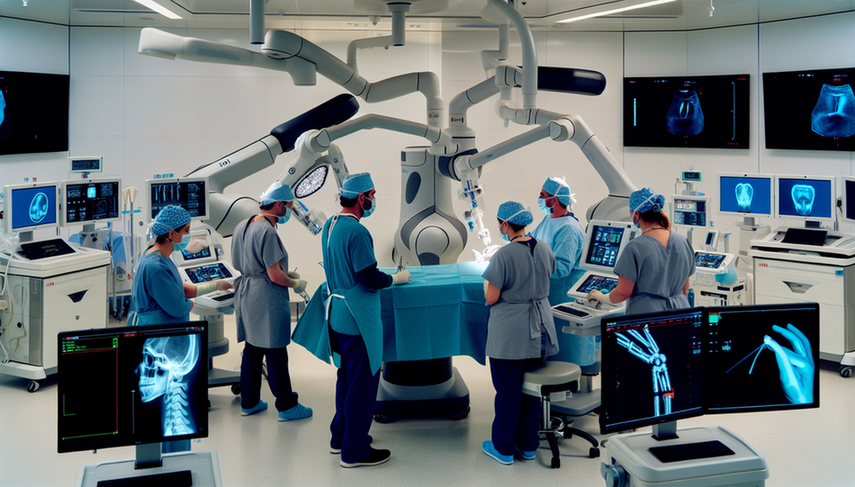Advanced Surgical Robotics: AI and Automation in the Operating Room for Surgeon-Assisted Procedures

Advanced surgical robotics has transformed the landscape of modern surgery, enabling surgeon-assisted procedures with unprecedented precision and accuracy. The integration of automation and AI in operating rooms has opened new possibilities, enhancing patient safety and optimizing surgical outcomes. In this context, robotic systems have significantly evolved, incorporating advanced technologies that promise to revolutionize surgical practice.
Diving Deeper into Surgical Robotics and AI
The evolution of surgical robotics over the past 30 years has been remarkable, from the early "master-slave" systems to today's surgical robots that incorporate artificial intelligence to enhance the precision and personalization of procedures. These advancements have been made possible through collaboration between technology companies and the medical sector, leading to the development of intelligent surgical robots capable of performing complex tasks with minimal human intervention.
Artificial intelligence plays a crucial role in improving robotic surgery, providing advanced intraoperative metrics and enabling the automation of certain steps in surgical procedures. Furthermore, AI is revolutionizing surgical education by offering automated skill assessments and specialized feedback for the training of surgeons.
In the field of vitreoretinal diseases, robotic technology has enhanced surgical precision, allowing procedures such as retinal vein cannulation and subretinal drug delivery. These innovations not only improve surgical accuracy but also reduce the risk of complications and enhance patient care.
Conclusions
The integration of AI in operating rooms and automation in robotic surgery represents a significant advancement in modern medicine. Although challenges such as cost and the lack of haptic feedback remain, the future of surgical robotics is promising. With ongoing innovation and technological improvement, we are likely to see broader adoption of these technologies, resulting in safer and more effective patient care.
Referencias
- [1] Artificial intelligence and robotic surgery: current perspective and future directions
- [2] Clinical applications of artificial intelligence in robotic surgery
- [3] Artificial Intelligence, Digital Imaging, and Robotics Technologies for Surgical Vitreoretinal Diseases
Created 20/1/2025
